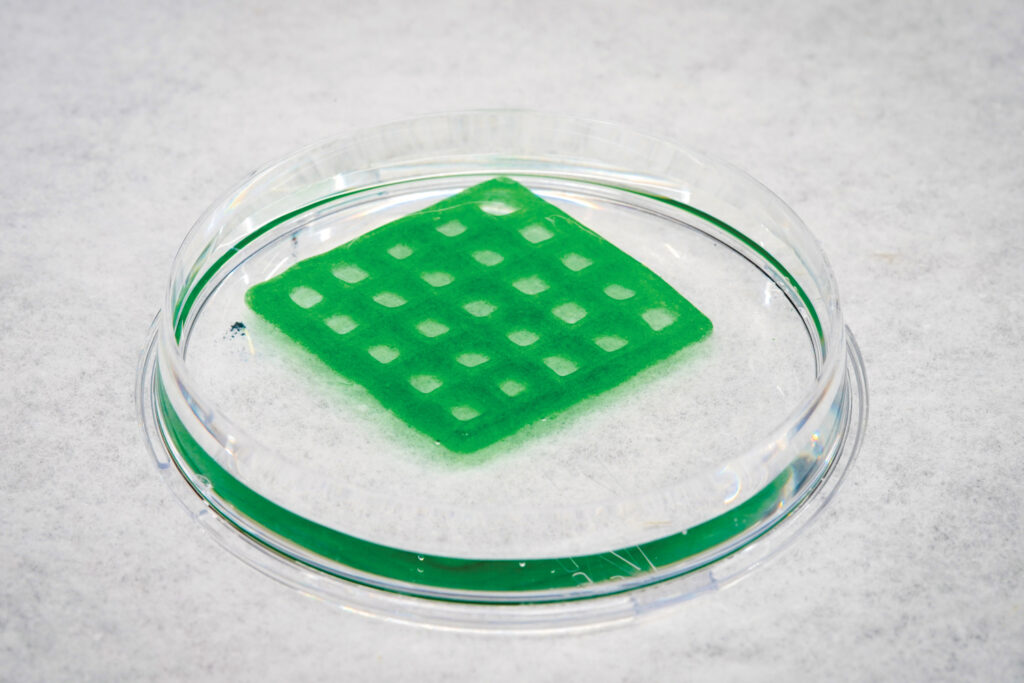
Researchers at the University of California San Diego have created a living material that can help clean up pollutants in water, including textile dyes. The gel, made from alginate, a polymer derived from seaweed, and cyanobacteria, was engineered to produce an enzyme that can neutralize chemicals such as bisphenol A (BPA), pharmaceuticals and dyes.
The team 3D-printed the gel into a lattice shape—found to be the best shape to keep the bacteria alive—and tested its efficacy with a solution containing indigo carmen, a common denim dye. The researchers also installed an “off switch” in the material, whereby it will self-destruct in the presence of the molecule theophylline, found in tea and chocolate.
“The living material can act on the pollutant of interest; then a small molecule can be added afterwards to kill the bacteria,” says Jon Pokorski, a professor of nanoengineering who co-led the research. “This way, we can alleviate any concerns about having genetically modified bacteria lingering in the environment.”
The research was published in August 2023 in Nature Communications.
 TEXTILES.ORG
TEXTILES.ORG


